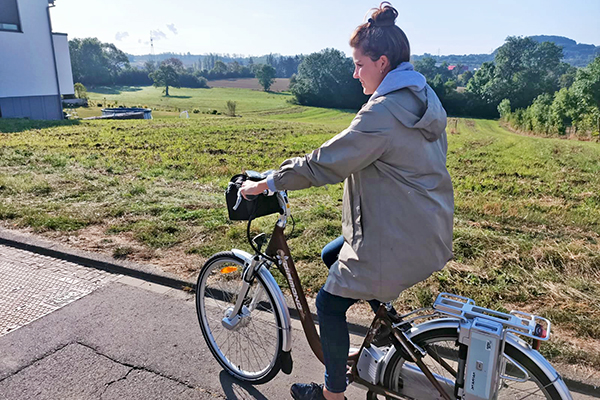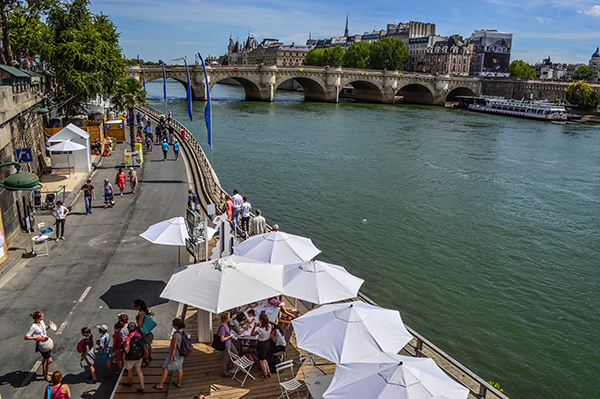Behavioural change / Cycle culture / Cycling / Cycling infrastructure / Facilities / Mobility / Pedestrians / Public Spaces
Want people to bike more? Make it convenient!
At the start of 2019, my colleague Robin Kleine wrote the article “Cycling is not in the Dutch DNA” explaining how cycling in the Netherlands is about more that them being “born on two wheels”. I would like to further elaborate on this idea, but from the perspective of a non-Dutchie who moved to the Netherlands as an adult. In my experience, in the same way Dutch people who are used to biking every day and move to another country tend not to cycle as much, those coming to the Netherlands from a country where cycling is not common will start biking everywhere. Take it from me. I grew up in Luxembourg, the country with the highest car to person ration in the world (!), and where biking was something you would only do in your free time as a hobby. I hardly ever used my bike, but when I moved to the Netherlands I started biking every day. Just like that, the bike became my primary mode of transportation. But one might ask, ‘why’?

I for one think that we as humans will always chose the simplest and most convenient way to do things, including when it comes to modes of transportation. However, the most efficient way of travelling from A to B changes from country to country, often based on which mode they prioritize. In Luxembourg this is the car whereas in the Netherlands it is the bike. Obviously if there are no biking paths and the public transportation network is not sufficient either, people chose the car because it is the fastest way to get you to your destination. Similarly, if you have an extensive and well-planned network of cycle paths combined with the knowledge that going by car will take more time – not to mention congestion and searching for parking – you will chose the bike as your preferred mode of transportation. It is as simple as that!
Policy makers, traffic engineers, planners and the general public tend to make up excuses as to why they think prioritizing more sustainable modes of transportation instead of cars won’t work. Popular excuses that we often hear are: “We don’t prioritize bicycle infrastructure because people will not bike anyways,” “No one uses their bike now so why invest in bike paths,” or even “We are not the Netherlands.” But let me tell you something, in the 1970’s the car was as popular in the Netherlands as in the rest of Europe, with less people cycling. As with nearly every other country, the Netherlands prioritized the car and invested in building wider streets for them.
However, they also realized earlier than any other country that focusing solely on the car was making streets less safe for people, especially children. Collectively they decided that they wanted to give back the streets to people. And when they started building bike paths instead of streets, the number of people cycling increased dramatically. Not because they inherited some special Dutch cycling gene but because it was the most convenient and efficient way to get from A to B! We now know that this simple concept works because it is happening in other countries, too. Let’s look at some examples shall we.
Paris – Taming their streets for people, not cars
Paris has begun closing down and narrowing some major roads to make space for people and bikes. Where there used to be thousands of cars each day you can now see thousands of pedestrians and cyclists. How did they do it? They certainly did not import some of those magic Dutch genes that’s for sure. Rather they simply shifted their focus from prioritizing cars to prioritizing people. Their aim is to built 1000-kms of cycle paths in Paris by 2020, and the changes have been very successful so far.
Christophe Najdovski, Deputy Mayor of Paris for Transportation, Mobility, Roadway and Public Space, recently expressed his excitement about the success by publishing the following numbers:
- Voie Georges Pompidou has seen an increase in cycling of 67% since last year
- Quai François Mauriac experienced an increase of 82.6%
- Boulevard Voltaire has seen an impressive increase of 125%
At the same time, the historically successful Vélib Métropole bike-sharing system announced that they passed the 100.000 rides per day threshold at the beginning of the September. These numbers speak for themselves, showing that if you provide safe, dedicated bike infrastructure, people will use it.

Brussels – Reducing cars by 2030
Brussels has declared a plan to reduce car traffic by 24% by 2030. To achieve this they are prioritizing cyclists, pedestrians and public transport over cars and similarly build a city for people. There have been some major changes in the infrastructure, with a lot of cycle paths being constructed throughout the city and, in some popular places, like the Place de Brouckère, closing it down for cars and instead opening it up to pedestrians. These measures in Brussel have already created change in the modal split. Pascal Smet, Brussels State of Secretary for Urbanism, shared on Twitter that from 2008 to 2017, Brussels has seen a decrease in car use of 19.9% while increasing public transportation by 33%, walking by 39%, and cycling by an astonishing 259%. So here we have yet another example showing us that by changing the priority of who you plan for, it will subsequently effect people’s transportation choices.

These are just two examples of what we see happening right now, and there are countless others. So what do we learn from this? First of all, it is not in someone’s DNA that determines whether or not they will cycle, but rather it is more a question of safe, available bike infrastructure and of convenience. We will always chose the easiest and fastest way to get somewhere, whether that be by foot, bike, train or car.
So what can we do?
We can and must prioritize people over cars by planning and building cities that give more space to bikes and pedestrians than to cars. If you are in a city where very few people – or even none – cycle, don’t worry and – more importantly – do not use this as an excuse! Because once you start building bike lanes, the people on bikes will follow. Or, to put it in Fred Kent’s words: “If you plan cities for cars and traffic, you get cars and traffic. If you plan for people and places, you get people and places.”
I think we can all agree that Dutch people don’t have a specific biking gene and that there are not magic particles in the Dutch air that make them want to bike. The Netherlands just decided years ago to prioritize biking over driving, resulting riding a bike being the most efficient mode of transportation for getting around in cities. But, if you still want to insist on making the connection between biking and genes, then let’s agree on the fact that humans instead have some kind of “convenience gene”, making them always chose the easiest way to do something. So, by that logic, make biking and walking the easiest way to move around in your city!

